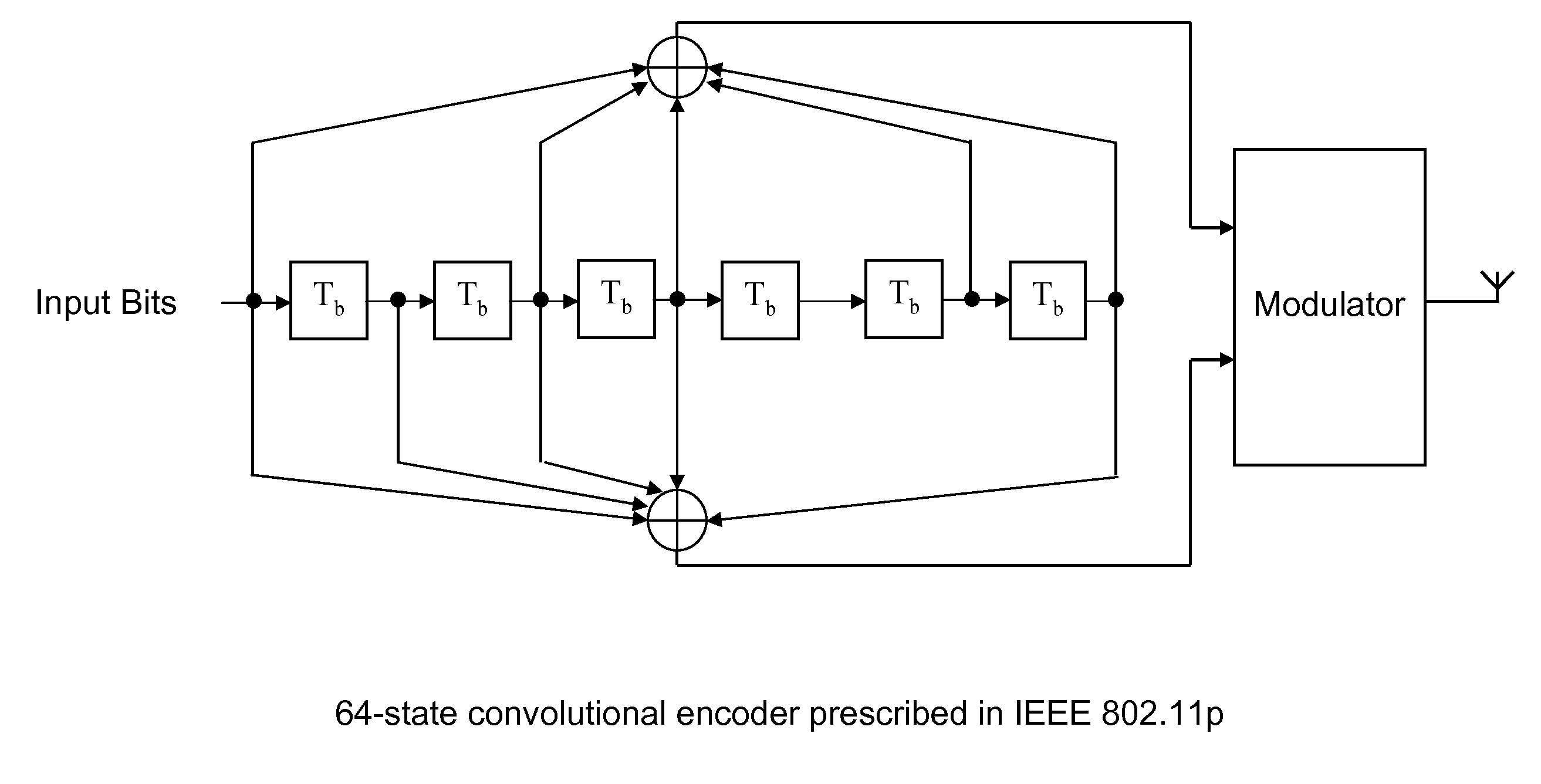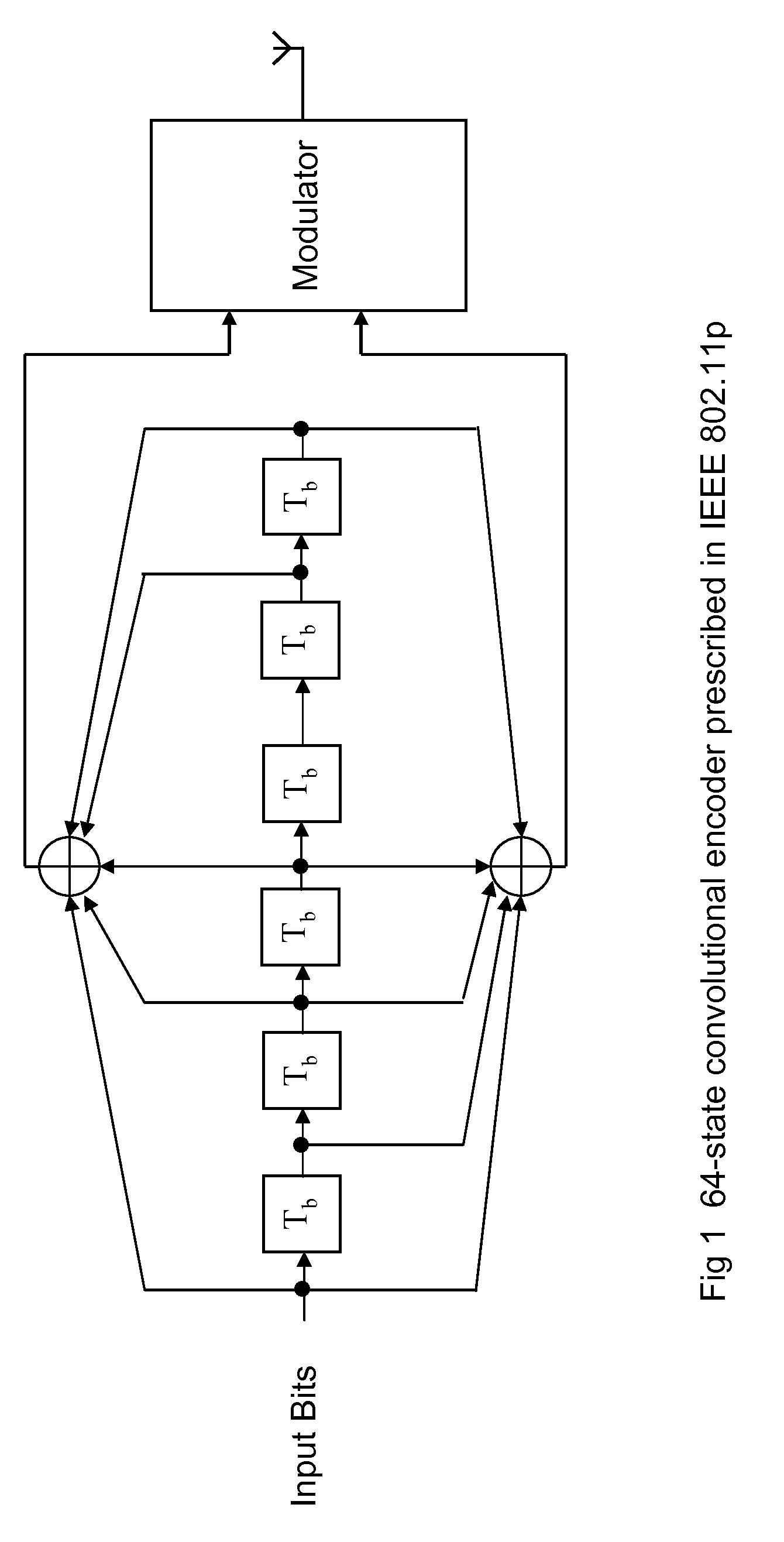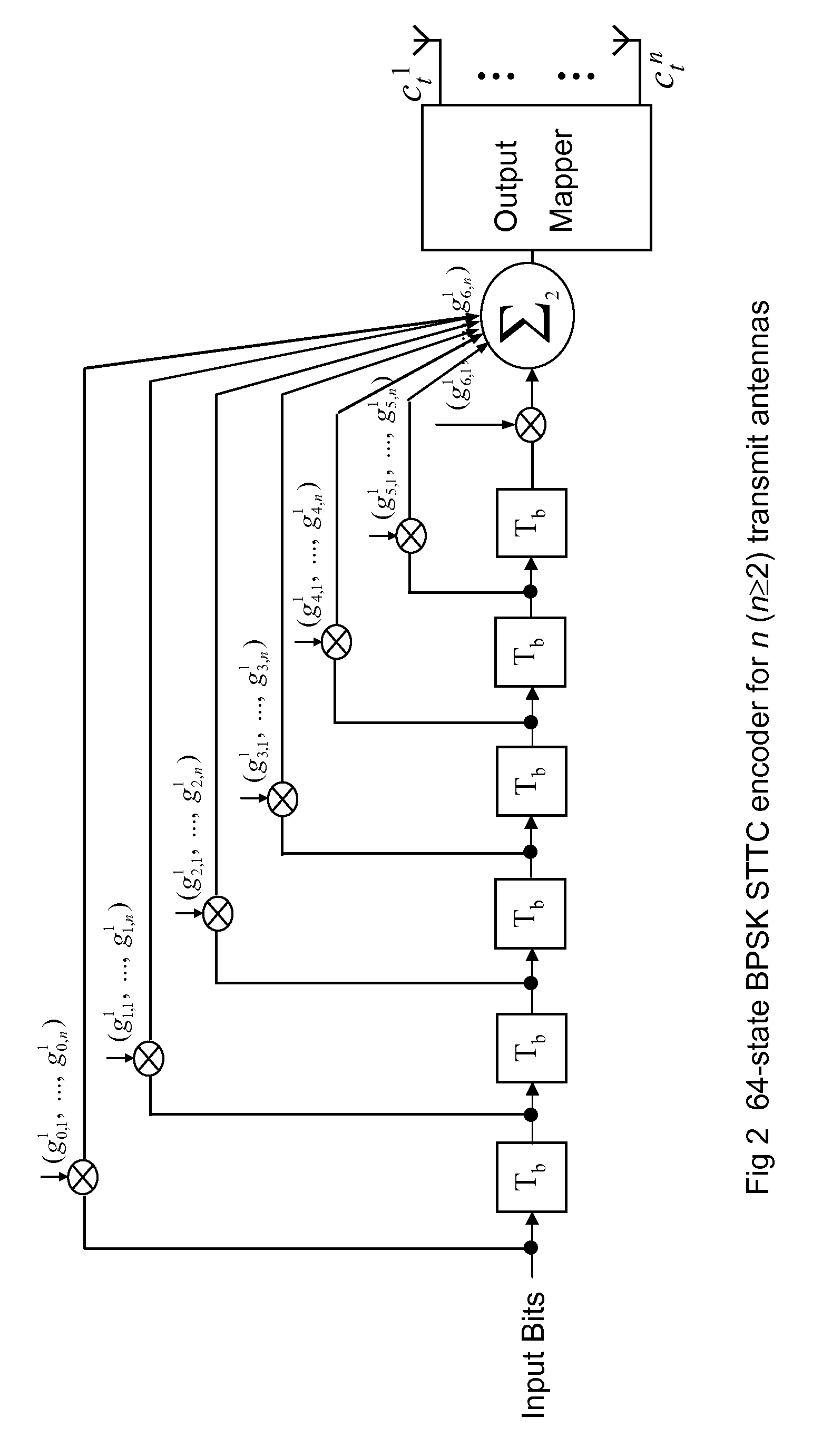Unified STTC Encoder for WAVE Transceivers
a transceiver and encoder technology, applied in the field of transceivers, can solve the problems of ostbc block time-varying fading within a symbol-level time-varying block, increased overhead of feed back time-varying instantaneous csi, and inapplicability of closed-loop mimo techniques to wave networks, etc., to achieve better or comparable error performance, flexible code rate, and higher data rate
- Summary
- Abstract
- Description
- Claims
- Application Information
AI Technical Summary
Benefits of technology
Problems solved by technology
Method used
Image
Examples
Embodiment Construction
[0047]The embodiments of our invention provide space-time trellis codes (STTC) for MIMO coding in multi-antenna WAVE networks. This is based on the following two facts.
[0048]As a trellis coded modulation technique for multi-antenna transmission, the codec complexity of STTC is similar to single-antenna trellis codes, e.g., convolutional codes, which have the same number of trellis states as STTC.
[0049]We describe an unified n-Tx STTC encoder implementation for all of modulation constellations specified in the IEEE 802.11p standard, including BPSK, QPSK, 16 QAM, and 64 QAM.
[0050]We provide a novel full-rate / duplicated pseudo-STTC techniques for single-antenna configuration, which provides a unified codec modules for both single- and multi-antenna transceivers. We first describe the pseudo-STTC techniques under the context of a single-carrier single-antenna network, and then describe the application of the proposed coding techniques to an orthogonal frequency-division multiplexing (OF...
PUM
 Login to view more
Login to view more Abstract
Description
Claims
Application Information
 Login to view more
Login to view more - R&D Engineer
- R&D Manager
- IP Professional
- Industry Leading Data Capabilities
- Powerful AI technology
- Patent DNA Extraction
Browse by: Latest US Patents, China's latest patents, Technical Efficacy Thesaurus, Application Domain, Technology Topic.
© 2024 PatSnap. All rights reserved.Legal|Privacy policy|Modern Slavery Act Transparency Statement|Sitemap



